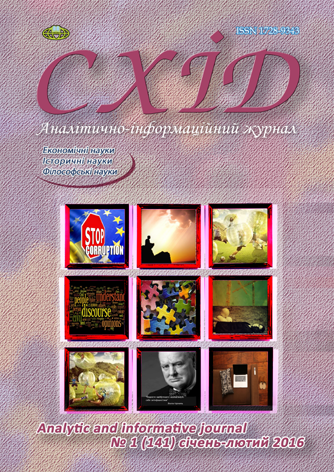Implementation of the integrated logistics system in the management of business processes
DOI:
https://doi.org/10.21847/1728-9343.2016.1(141).150913Keywords:
integrated business processes, logistics integration, logistics management, vertically-integrated systemAbstract
The article considers the concepts of integrated logistics and its introduction into the economic activity of the processing enterprise. The structure and directions of business processes, which vary depending on the strategic goals and specific subjects of economic activity, are presented. The comparative characteristic of traditional and logistic management of business processes is presented.Downloads
References
Williamson, O. I. & Winter, S. J. (2001). The nature of the firm. On the 50th anniversary of the publication of the work of R. Kouza. The nature of the company. Delo Publishing, Moscow, 360 p. (rus).
Porter, Michael E. (1998). Competitive Advantage: Creating and Sustaining Superior Performance. The Free Press. New York, 592 p. (eng).
Verkhovskaya, O. R. & Savichev O. P. (2009). Strategic management. SPSUEF Publishing, St. Petersburg, 128 p. (rus).
Gelmanova, Z. S. and Biryukov, V. V. (2013). Industrial integration processes. Economy and society. № 3 (8). P 172-176 (rus).
Stock, G. N. & Greis, Noel P. Kasarda, John D. (1998). Logistics strategy and structure: a conceptual framework. International Journal of Operation and Production Management, Vol. 18 No. 1. Pp. 37-52 (eng).
Mingaleva, J. and Tkacheva S. (2000). Clusters and the formation of the structure of the region. Mezhdunarodnaya ekonomika i medunarodnyye otnosheniya. №5. Pp. 49-53.
Downloads
Published
How to Cite
Issue
Section
License
Copyright (c) 2018 Pavlo Pavlovskiy

This work is licensed under a Creative Commons Attribution-NonCommercial-NoDerivatives 4.0 International License.
1. Authors bear responsibility for the accuracy of facts, quotations, numbers and names used.
2. Manuscripts are not sent back.
3. The publisher does not always agree with the authors' opinion.
4. The authors reserve the right to authorship of the work and pass the first publication right of this work to the journal under the terms of a Creative Commons Attribution-NonCommercial-NoDerivatives 4.0 International License. This license allows others to distribute (copy) the published work for non-commercial purposes, provided there is mandatory attribution to its authors and a link to the first publication in our journal.
5. The authors have the right to conclude separate supplement agreements that relate to non-exclusive work distribution in the form in which it has been published by the journal (for example, to upload the work to the online storage of the journal or publish it as part of a monograph), provided that the reference to the first publication of the work in this journal is included.

